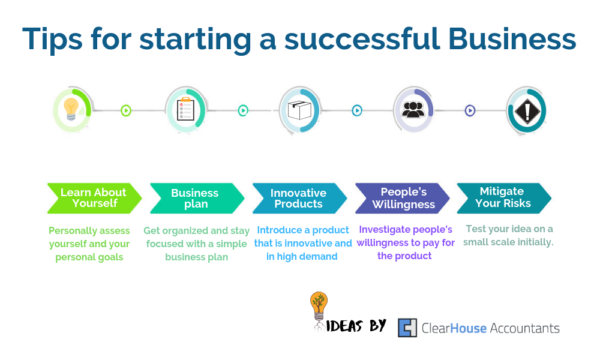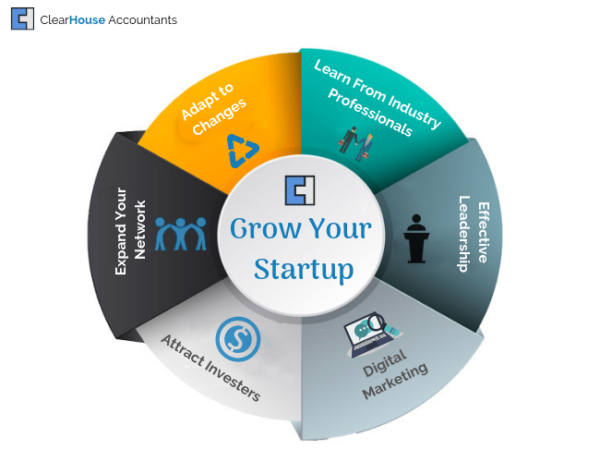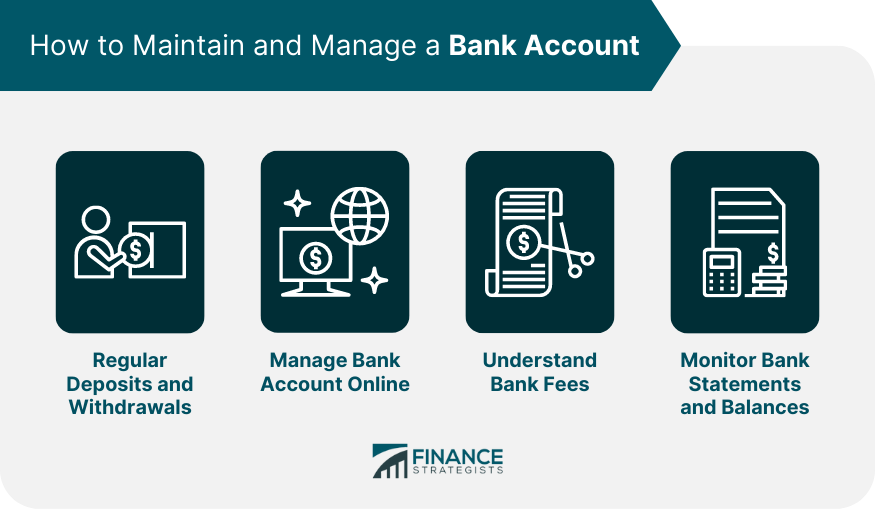The rate at which entrepreneurs are launching new businesses is at an all-time high. That’s thanks in part to the ease of starting a new company and reaching customers around the world in the digital age.
However, just as quickly as new businesses are starting, many are also folding because founders lack the expertise to help their new ventures succeed. The launch stage is relatively easy, but the real challenge begins after a new business opens.
Business owners need to establish an effective strategy, market their products, attract customers, and deal with problems in real-time.
In this guide, we’ll provide 16 valuable tips on how to start a successful business.
Let’s explore!
Tip 1: Think About Your Goals
Many new business owners have an idea for a product or service, and jump straight into launching a business. What they forget to think about is what their ultimate goal is once that business launches.
Is a business supposed to turn into a huge company with investors, hundreds of employees, and customers around the world? Or is success in a business owner’s mind having a small shop with one or two employees and sustainable revenue?
It’s important to think carefully about long-term business goals because they will play an important role in making decisions about a business.
For example, a business owner who is content with a small shop might decide to self-fund their business and only open a single, local storefront.
A business owner who wants to swing for the fences might take on investors and open locations in multiple cities right from the start.
Business owners should also think about their own tolerance for business and financial risk. Some businesses are simply riskier than others.
For example, there’s a much higher chance that a hedge fund will fail than there is that a local pizza place will fail.
For entrepreneurs who are willing to take on more risk, take time to learn about how to identify and mitigate risks.
Tip 2: Create a Business Plan
A business plan is one of the most critical documents a founder can create early in the process of launching a business.
It serves as a blueprint for the company, laying out everything from who the intended customers are to what goods and services a business will offer.
From the first day an entrepreneur starts working on their launch to opening day, the business plan should be their guide.
There are no formal requirements for what goes into a business plan. However, consider including these sections:
- Business description
- Management and organization
- Products and services
- Customer analysis
- Competitor analysis
- Marketing and sales
- Finances
Above all else, the business plan should lay out what makes a new business unique from existing competitors and why customers will flock to the business.
In other words, the plan should lay out a clear argument for why the business will be successful and how it will achieve that success.
Importantly, the business plan isn’t a static document and it doesn’t need to be perfect at first. Founders will frequently make changes to their plan as their business comes together.
That’s okay – it’s better to have a decent plan and start moving towards launch than it is to wait until the plan is perfect before doing anything.
Tip 3: Focus on Product-Market Fit
For a business to succeed, customers have to want what it’s selling.
This might seem obvious, but so many new businesses get it wrong. Founders create a product that no one actually wants or offer a service that doesn’t exactly fit the intended customers.
Business owners should be laser-focused on product-market fit. Whatever goods or services a business offers need to solve a real problem for customer.
For example, founders can identify a gap in a market. Maybe people in a neighborhood would like a sushi restaurant, but there isn’t one. By opening a sushi restaurant, the business owner is fulfilling a local need and customers will show up.
Most business owners get started on the path of creating a business by identifying a gap like this. However, they don’t always understand what their intended audience wants before launching.
To solve this, it’s important to conduct in-depth customer research.
Spend time talking to customers – ask them how they feel about a hypothetical business and whether they would use it. Entrepreneurs can even send out surveys to collect more data and narrow in on the exact products and services they should sell.
Tip 4: Test the Waters to Minimize Risk
Launching a new business is always going to be risky. It takes a huge amount of time, capital, and emotional energy.
That said, business owners don’t have to jump in fully before they’re confident their venture will succeed.
More often, it’s a good idea to start slow and find low-commitment ways to explore a business idea. As Warren Buffett said, “Never test the depth of the river with both feet.”
For most business owners, it makes sense to launch a business as a side-hustle initially. Instead of quitting a job and giving up reliable income, an entrepreneur could run their new business on nights and weekends. Only once the business is established should they move to full-time to scale up operations.
Another way to mitigate risk is to sell a limited range of products or services at first.
For example, if a business is selling custom-made hats, they might only sell a few designs until the business takes off. Adding more colors and patterns or even expanding to other products is a way to scale down the road.
Testing the waters isn’t always possible.
For example, opening a storefront is a big commitment that takes a lot of money.
In that case, it’s extremely important for business owners to do as much research as possible about their customers and competitors to ensure that the venture they launch is likely to succeed.
Tip 5: Learn from Your Mistakes
Every new business owner will make mistakes.
It’s part of the process.
What differentiates the most successful business owners from those who don’t make it is how they respond to mistakes. Highly successful individuals approach mistakes as learning opportunities rather than as fully negative experiences that they regret forever.
Some of the world’s most successful people have made mistakes and then come back better than ever. For example, Steve Jobs was fired from Apple before he returned to lead the company.
Ariana Huffington launched several failed ventures before she founded the Huffington Post.
Successful entrepreneurs don’t obsess over their failures or place the blame on others. Instead, they overcome barriers with persistence and consistency. The key is to approach mistakes as opportunities and to grow from them.
Tip 6: Build a Solid Network
One of the best resources business owners have are other business owners who have gone through a similar process.
They understand what it takes to start a business, the unique challenges that an entrepreneur is facing, and the doubts that can creep in when things aren’t going right.
Building a network of other entrepreneurs in the same industry is key to finding support during the startup process. Someone who starts out as a formal acquaintance could turn into a key mentor with advice on important decisions that impact the trajectory of a business.
Having a diverse network is also important for getting multiple perspectives on a new business. It’s easy to get tunnel-vision when creating a new venture and to end up down a rabbit hole. Talking to other business owners in a network enables entrepreneurs to go back to thinking about the big picture and spot things they may have missed.
Networking requires dedication. Business owners can reach out to others in their industry online, over the phone, or in-person at conferences.
It’s important to be friendly, helpful, and open to learning.
In almost every industry, there are veterans who want to help newcomers with the right attitude succeed.
Tip 7: Prioritize learning
A new business’s growth will slow down if the founder doesn’t fully understand the industry they’re working in.
It’s possible to break into a market with one outstanding product, but introducing follow-up products and services requires a deeper understanding of what customers need and what’s already out there.
There are several ways that entrepreneurs can learn more about their fields. One of the best ways is to ask questions to business leaders in a network—this is just another of the benefits of establishing a strong network.
Another way is to attend conferences. These can expose a business owner to new ideas or trends, plus offer opportunities to chat with vendors, customers, and competitors.
Industry publications are also helpful.
These often cover news from related companies and can highlight mistakes or opportunities that a business owner should be aware of.
Broader business-centric publications can provide additional help with things like business management, financial management, and hiring that aren’t specific to a single industry.
Tip 8: Build a Team and Be an Effective Leader
A founder’s duty is to plan, strategize and grow their business. While entrepreneurs shouldn’t be afraid to get in the weeds and participate in day-to-day operations, their time is often best-spent focusing on the big picture.
That means that business owners need to build a team and delegate to others in order to run their business.
Many business owners have a difficult time with this. They prefer to be involved in every task and not give up any control.
But learning to leverage a team can make a huge difference in how quickly a business grows. Employees can increase throughput, bring new ideas to the table, and solve problems that founders on their own can’t handle. Having an effective team can make or break a startup.
The key to building a small business dream team is to be an effective leader. Founders can lead by example, working as they expect their employees to work. For example, if a founder puts in overtime every day and acts positively, their employees are likely to work harder and be more positive as well.
Business owners also need to trust employees and let them work independently. Teams need supervision, but no one wants to be hovered over.
Finally, entrepreneurs can be effective leaders by helping their employees develop professionally. They should institute performance reviews, encourage employees to learn new skills, and create opportunities for growth within a company.
Tip 9: Leverage Digital Marketing Channels
One of the benefits of starting a business in the digital age is that it’s easier than ever before to reach customers.
Social media platforms, search engines, and other tools give business owners a way to precisely target the people who they hope will use their business.
With search engine ads, for instance, a new bike shop can appear at the top of search results for potential customers searching for a bike in a specific city.
Social media ads enable a new clothing store to serve ads to potential customers who are in a certain age range and have recently shopped for clothes online.
This specificity is a game-changer for businesses.
Whole industries have developed around the ability to narrowly target customers based on their preferences.
Small businesses in particular have benefited because they can now compete with retail giants that have much larger advertising budgets and brand-name recognition.
Another benefit of digital ads is that they’re quite inexpensive. The cost for digital ads varies, but it’s generally around 10% of the cost of traditional ads on TV.
So, newly launched businesses can get into advertising and start growing their customer bases without a huge marketing budget.
Check out our complete guide to how to create a digital marketing strategy for small businesses for more details.
Tip 10: Keep Costs as Low as Possible
Runaway costs have been the demise of many small businesses.
It’s all too easy to spend a little here and there, only to realize too late that all of those costs add up to an overwhelming sum. That’s especially true with inflation cutting into profits for many businesses.
While starting a business is expensive, small business owners need to be as frugal as possible. Every bit of savings matters.
Some relatively easy ideas to cut costs include:
- Use free, open-source software instead of paid software
- Invest in automation tools
- Look for used equipment
- Recycle as many materials as possible
- Compare prices across vendors and negotiate contracts
In general, the biggest cost that new businesses will face is payroll. Employees are expensive, but they’re also essential to making sure your business runs smoothly.
One way that businesses can reduce payroll costs is to limit overtime.
That might mean reducing a business’s operating hours to 40 hours per week or hiring two part-time employees instead of one full-time employee.
Businesses can also reduce the number of employees they need to hire by giving each team member multiple roles.
This ensures that employees always have work to do, so business owners aren’t paying for idle time.
Tip 11: Focus on Stellar Customer Service
According to a Zendesk report, 81% of consumers say that a positive customer service experience is important in their decision to make a repeat purchase from a company.
That’s a huge number and it means that the success of any small business could hinge on whether customers have a good experience or not.
Not only is a happy customer more likely to come back and buy again, but they’re also more likely to tell their friends and family to check out a business.
By the same token, poor customer service can sink a company. The same report found that 61% of consumers will switch to a competitor after just one bad experience with a company.
So, every interaction that customers have with your business should be positive.
It’s important for business owners and their employees to be cheerful, helpful, welcoming, and patient. Simple things like greeting a customer at the door or asking their name can make a big difference.
On top of that, small businesses need to provide multiple ways for customers to get in touch.
Have a phone number, email, or even a live chat option on the business’s website. Make sure that the customer service team responds to questions quickly and ask for feedback from customers.
Tip 12: Remain Focused on Success
The goals that business owners set out for themselves early in the process of launching a business should remain their guide even after a business finds its footing.
The best entrepreneurs are those who don’t get complacent once a business gets off the ground, but constantly look for new ways to improve.
That could mean scaling up by expanding into new markets, introducing new products that customers love, or doubling down on existing customers to capture more of their business.
It can be tempting for entrepreneurs to start a new venture and try to manage two companies.
However, achieving maximum success with a business requires 100% of a founder’s attention. It’s better to pour everything into one business and make it as good as possible than it is to split time between companies.
Another thing to keep in mind is that the market is constantly changing, and businesses need to keep up. There might be new trends that require new products or modified designs.
Be aware that new tech might make old products and services obsolete, and businesses need to adapt to stay relevant. Always listen to customers and incorporate their feedback to stay ahead of a market in flux.
Tip 13: Embrace Technology and Automation
In today’s fast-paced business environment, leveraging technology and automation can be a game-changer.
Use software and tools that can automate repetitive tasks, such as accounting, customer relationship management (CRM), and inventory management.
This not only saves time but also reduces the likelihood of human error.
Staying abreast of technological advancements in your industry can also provide a competitive edge, whether it’s through adopting new e-commerce platforms, utilizing data analytics, or exploring emerging trends like AI and machine learning.
Tip 14: Foster a Positive Company Culture
A positive company culture can significantly impact employee satisfaction, retention, and productivity.
Create an environment where employees feel valued, respected, and part of a team.
Encourage open communication, recognize and reward achievements, and provide opportunities for professional growth.
A healthy company culture not only improves employee morale but can also attract top talent and positively influence your brand image.
Tip 15: Stay Compliant with Laws and Regulations
Ensure that your business complies with all relevant laws and regulations.
This includes tax laws, employment laws, health and safety regulations, and industry-specific regulations. Staying compliant not only avoids legal issues but also builds trust with your customers and employees.
Keep informed about any changes in legislation that may affect your business and seek legal advice when necessary.
Tip 16: Prioritize Work-Life Balance
Running a business can be all-consuming, but it’s important to maintain a healthy work-life balance. Burnout can lead to decreased productivity and can negatively impact your decision-making abilities.
Take time to relax and recharge, and encourage your employees to do the same.
A well-balanced work-life approach leads to a more productive, creative, and happy workforce, which in turn benefits the business.
By incorporating these additional tips into your strategy, you can further enhance your journey towards establishing and growing a successful business.
How to Start a Succesful Business—Step-by-Step Guide
Starting a small business can be complex.
We’ll break the process down into 10 easy steps to help new business owners get started.
Step 1: Find a niche
One of the most challenging parts of launching a small business is to decide what kind of business to start. Business owners need to find something that they’ll love to do but that also has money-making potential.
Some questions to ask to generate ideas include:
- What skills do you have?
- What are you passionate about?
- Are there any businesses you would like to see in your community that don’t exist?
- Are there products or services that could be better?
Based on answers to these questions, business owners can create a shortlist of ideas that hold promise for turning into businesses.
It’s not critical at this stage, but founders will also want to think about how much time they want to commit to a new business, how much capital they’ll have to start a business, and where they see themselves and their business in 5-10 years. Those types of considerations can help business owners decide which of the ideas on their shortlist is best for them.
Step 2: Conduct market research
Before proceeding with any business idea, entrepreneurs need to make sure that their idea is viable. That requires two types of market research: customer research and competitor research.
Customer research involves identifying the prospective customers for a hypothetical business. Who will purchase a business’s products or services and why?
This research should be specific. It should identify the problem that customers are coming to a business to solve. It should also identify customers by age, location, income, and more. Then, it’s up to business founders to go out and talk to these prospective customers to get more information about the products and services they actually want.
Competitor research involves identifying competitors to a hypothetical business. Are there other businesses in the area that offer similar products and services?
Competitor research should consider whether existing businesses have more demand than they can meet, what their pricing is like, and how they might respond to a new business in their industry.
Step 3: Create a business plan
We covered how to create a business plan in our tips above. A business plan will be essential for any business owner who’s searching for funding, but it’s a good idea even if a business will be self-funded.
The business plan should be as detailed as possible, but it doesn’t need to be perfect at this point.
Step 4: Choose a business name
Choosing a business’s name is a big step. The name should clearly state what the business is so that customers know exactly what they can buy based on the name alone. At the same time, having a fun or playful name can make a business more memorable for customers.
Founders who need help with this process can use an AI-powered business name generator. There are several free name generators online from companies like Shopify and Looka.
Make sure that a name isn’t taken already by checking a state’s online business registry.
Step 5: Register the business
Next, it’s time to choose a business structure and register the new business.
By default, most new businesses start out as a sole proprietorship. Under this structure, a business owner and their business are the same for legal and tax purposes.
That can be problematic since a business owner’s personal assets, like their home, are at risk if the business goes bankrupt. To avoid this, many business owners choose to register their business as a limited liability company (LLC). In an LLC, the business owner and business are separate entities.
To register an LLC, business owners must file paperwork with their state’s Secretary of State and pay a registration fee. They’ll also need to request a free employer identification number (EIN) from the IRS.
Note that some states and cities require local business licenses for businesses in certain industries. Be sure to check local regulations to determine if additional licenses are required.
Step 6: Open a business bank account
Once the business is registered, business owners can open a business bank account. This is important because business owners should never mix personal funds and business funds.
A business bank account offers a place to accept payments and make payments to suppliers. It works similarly to a personal checking account and businesses can even have their own checkbooks.
Step 7: Look for funding
There are several ways to fund a new business. The simplest is to self-fund, meaning that the business owner pays for the business’s startup costs out of their own pocket. All of the money a business owner invests when self-funding is at risk if the business fails.
New business owners can also look for loans. They might go to family or friends, or get a loan from the Small Business Administration. It’s also possible to use personal loans to fund a new business.
Businesses that require more capital may need outside investment. Venture capitalists and angel investors can provide startup funding, but they usually take an ownership stake in a business. That means that the business owner no longer owns 100% of their business and has to answer to investors.
Step 8: Hire employees
Some businesses might not need employees at first. But most will need at least one employee to help manage day-to-day operations.
It’s important to get the right person for the job. Startup businesses typically need someone who’s hard-working, willing to take on multiple roles, and not afraid to go above and beyond.
Growing businesses can also get additional help by hiring part-time employees or taking on independent contractors for specific tasks.
Step 9: Create a website
Whether a business sells online or through a physical storefront, it’s important to have a website. This is one of the main ways that customers will find out about a new business.
The website should explain what the business is, what it offers, when it’s open, how to get in touch, and more. It can also include pricing so that potential customers know what to expect if they come into the store or call for a service.
New business owners can hire someone to create their website, but it’s relatively easy to launch a website on a budget using a website builder platform.
Step 10: Launch
Once all the pieces are in place, it’s time to launch the business. Make the website live, open the shop doors, and get ready to welcome customers.
Be sure to put the business’s best foot forward from day one. It’s important to give customers a great experience so they recommend the business to others and turn into repeat customers.
Final Thoughts
Learning how to start a successful business involves a blend of careful planning, understanding your market, prudent financial management, and a commitment to continuous learning and adaptation.
By following the steps and tips outlined in this guide, aspiring entrepreneurs can increase their chances of launching and sustaining a thriving business.
Remember, the journey of entrepreneurship is filled with challenges and opportunities alike, and success often comes to those who are prepared, adaptable, and resilient in the face of obstacles.
The key is to stay focused on your goals, learn from your experiences, and keep evolving with the market’s needs.








